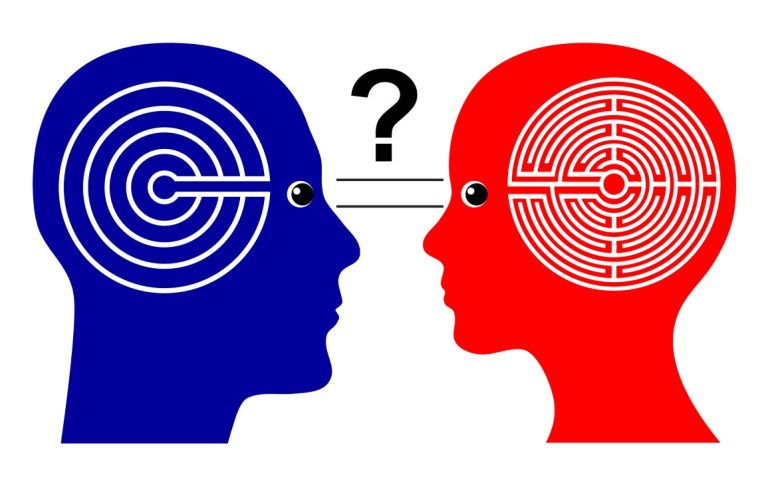Public-speaking Behavior That Distracts An Audience
What public-speaking behavior would be most distracting for an audience? Well, let’s dive into it and explore this fascinating topic together! We all know that public speaking can be nerve-wracking, but it’s important to understand how certain behaviors can either captivate or distract the audience. So, whether you’re preparing for a school presentation or a future career in public speaking, buckle up and get ready to learn about the dos and don’ts that can make or break your speech. Let’s dive in!
Imagine you’re sitting in an auditorium, eagerly waiting for a speaker to begin. Suddenly, they step on stage, and the first thing you notice is their constant pacing back and forth. It’s like they’re on a never-ending treadmill! This behavior would definitely be distracting, right? Well, that’s just one example, and we’ll be exploring many more details about public-speaking distractions in this article.
When it comes to captivating an audience, confident body language plays a crucial role. However, there are certain behaviors that can do just the opposite. From excessive hand gestures to fidgeting like there’s no tomorrow, these distractions can hinder your message from reaching its full potential. So, let’s take a closer look at which public-speaking behavior would be most distracting for an audience and how you can avoid falling into those traps.
So, whether you’re preparing for a classroom presentation or envisioning a future as a renowned public speaker, understanding the behaviors that can distract your audience is key. Ready to explore the fascinating world of public-speaking distractions? Let’s get started!
When it comes to public speaking, certain behaviors can be highly distracting for your audience. One such behavior is excessive fidgeting or pacing, which can draw attention away from your message. Another distracting behavior is using filler words like “um” and “uh” too frequently. Similarly, speaking too softly or too loudly can make it difficult for the audience to focus. Additionally, excessive use of hand gestures or constantly checking notes can also be distracting. It’s important to be aware of these behaviors to ensure a captivating and engaging presentation.

Which Public-Speaking Behavior Would Be Most Distracting for an Audience?
Public speaking can be a nerve-wracking experience for many individuals. It requires not only effective communication skills but also the ability to engage and captivate an audience. However, certain behaviors can be highly distracting for an audience, hindering their ability to focus on the speaker’s message. In this article, we will explore the public-speaking behaviors that are most likely to distract an audience, providing insights into how to avoid them and deliver a more impactful presentation.
Why Audience Engagement Matters
Before delving into the specific distracting behaviors, it is essential to understand the significance of audience engagement. When individuals attend a public-speaking event, they expect to be informed, entertained, or inspired. However, if the speaker’s behaviors or actions become a source of distraction, it diminishes the overall experience for the audience. As a speaker, it is crucial to maintain the attention and interest of your listeners by eliminating any practices that may hinder their focus.
1. Excessive Use of Filler Words
Filler words such as “uh,” “um,” “like,” and “you know” can be an immediate distraction for any audience. While occasional use of such words is natural, excessive reliance on them can significantly detract from the speaker’s credibility and the overall flow of the presentation. Filler words create breaks in the delivery, disrupt the rhythm, and make the message less clear and concise.
To avoid this distracting behavior, practice your speech or presentation beforehand to identify areas where filler words tend to creep in. Use strategic pauses instead to gather your thoughts and provide a moment of emphasis. Additionally, focusing on maintaining a steady pace and being mindful of your words can gradually reduce the reliance on filler words and improve the overall impact of your speech.
2. Poor Body Language
Body language plays a crucial role in public speaking, as it conveys nonverbal cues that can either enhance or distract from the speaker’s message. Poor body language, such as slouching, fidgeting, or avoiding eye contact, can be highly distracting for the audience. It not only reflects a lack of confidence but also diminishes the perceived authenticity and credibility of the speaker.
To combat this distracting behavior, practice maintaining an upright posture and using purposeful gestures during your presentation. Maintain eye contact with different individuals throughout the room to create a connection with your audience. Utilize open and welcoming body positioning to foster engagement and make a positive impression. By incorporating intentional body language, you can captivate your audience and maintain their focus on your message.
3. Monotonous Speaking Style
A monotonous speaking style can quickly become a distraction for any audience. When a speaker lacks variation in tone, pitch, and pace, listeners may lose interest or struggle to stay engaged. It is essential to use vocal variety to convey emotions, highlight important points, and infuse energy into your delivery.
To avoid this distracting behavior, focus on incorporating vocal variety throughout your presentation. Experiment with changes in volume, intonation, and pace to create a dynamic and engaging speaking style. Emphasize key words or phrases to add emphasis and maintain the interest of your audience. By practicing and incorporating vocal variety, you can keep your audience captivated and ensure they remain focused on your message.
4. Excessive Use of Visuals
While visuals can be a powerful tool for enhancing a presentation, their excessive use can be highly distracting for an audience. Overloading slides with text, complicated diagrams, or excessive animations can shift the audience’s attention away from the speaker and towards the visual elements.
To avoid this distracting behavior, aim for simplicity and clarity when incorporating visuals into your presentation. Use visuals sparingly to support your key points rather than overpowering them. Ensure that the font and color choices are easy to read and understand. Additionally, rehearse your presentation to ensure a smooth transition between your speech and the visual aids. By striking the right balance, visuals can enhance your message rather than distract your audience.
5. Lack of Preparation
One of the most distracting behaviors for an audience is a lack of preparation on the speaker’s part. When a presenter appears unprepared, constantly flipping through notes, or forgetting important points, it creates a sense of unease among the audience. This distraction affects the perceived credibility and professionalism of the speaker, making it challenging for the audience to fully engage.
To avoid this distracting behavior, invest ample time in preparing your speech or presentation. Familiarize yourself with the content, structure your key points, and rehearse extensively. Create detailed notes or cue cards that serve as reminders rather than a crutch. By being well-prepared and confident in your delivery, you can keep your audience engaged and minimize any distractions.
6. Inappropriate or Excessive Use of Humor
Humor can be a powerful tool in public speaking, helping to engage the audience and make the presentation memorable. However, the inappropriate or excessive use of humor can quickly become a distraction. Jokes that are offensive, insensitive, or overly frequent may alienate portions of the audience and divert attention from the main message.
To avoid this distracting behavior, be mindful of the nature and timing of your humor. Consider the diversity and sensitivities of your audience and ensure that your jokes are inclusive and appropriate for the context. Use humor sparingly and strategically to enhance, rather than dominate, your presentation. By striking the right balance, you can effectively engage your audience without distracting them from the message.
The Importance of Audience-Centric Speaking
To deliver a presentation that captivates and resonates with the audience, it is essential to prioritize their needs and preferences. By avoiding distracting behaviors, maintaining eye contact, using compelling visuals, incorporating vocal variety, and demonstrating confidence through body language, speakers can create an engaging and impactful presentation. Ultimately, the focus should be on delivering a message that informs, inspires, and leaves a lasting impression on the audience.
Key Takeaways: Which Public-Speaking Behavior Would Be Most Distracting for an Audience
2. Excessive use of filler words like “um,” “uh,” or “like” can be distracting and undermine the speaker’s credibility.
3. Poor body language, such as constantly shifting or fidgeting, can divert the audience’s attention.
4. Reading directly from notes or slides instead of maintaining eye contact can disconnect the speaker from the audience.
5. Failure to control volume or using a monotonous tone can bore and distract the audience.
Frequently Asked Questions
Here are some commonly asked questions about public-speaking behaviors that can be distracting for an audience.
1. What are some common public-speaking behaviors that can distract an audience?
There are several behaviors that can be distracting for an audience during public-speaking. One common behavior is excessive fidgeting or pacing back and forth on stage. This can draw attention away from the speaker’s message and make it difficult for the audience to focus. Another distracting behavior is the use of filler words such as “uh” or “like” which can make the speech sound less polished and less credible. Additionally, speaking too fast or too slow can also be distracting, as it can be difficult for the audience to follow along or maintain interest.
Other distracting behaviors include making frequent or exaggerated hand gestures, constantly looking down at notes or slides, and lack of eye contact with the audience. These behaviors can make the speaker appear nervous or unprepared, and can diminish the impact of their message.
2. How can excessive use of visual aids distract an audience during a speech?
Visual aids can be an effective tool for enhancing a speech, but their excessive use can be distracting for the audience. When visual aids are too busy or cluttered, they can overwhelm the audience and divert their attention away from the speaker. Similarly, using too many words or complex graphs on slides can make it difficult for the audience to understand and follow along.
Additionally, relying too heavily on visual aids and reading directly from them can make the speech feel scripted and less engaging. Instead of connecting with the audience, the speaker may end up focusing more on the slides, reducing the impact of their message.
3. How does mumbling affect the audience’s perception during a presentation?
Mumbling during a presentation can significantly affect the audience’s perception of the speaker and the content. When a speaker mumbles, the words become unclear and difficult to understand, which can lead to confusion and frustration for the audience. It becomes challenging for them to follow along and fully grasp the intended message.
In addition to hindering comprehension, mumbling can also make the speaker appear less confident and less credible. It creates a barrier between the speaker and the audience, making it harder for the audience to connect with and trust the speaker. As a result, the impact of the presentation is diminished.
4. Why is speaking too softly or loudly distracting for the audience?
Speaking too softly or loudly can be distracting for the audience because it affects their ability to hear and engage with the speaker. When a speaker speaks too softly, it becomes difficult for the audience to hear and understand the message. This can lead to frustration and a loss of interest, as the audience struggles to make sense of what is being said.
On the other hand, speaking too loudly can also be distracting as it can overwhelm the audience and make them uncomfortable. It can come across as aggressive or obnoxious, leading to a disconnect between the speaker and the audience. The volume at which a speaker speaks should be at a comfortable level to ensure that the audience can fully absorb the content without any distractions.
5. How does excessive use of fillers impact the effectiveness of a speech?
Excessive use of fillers such as “um,” “like,” and “you know” can significantly impact the effectiveness of a speech. Fillers can create a distraction for the audience and detract from the speaker’s credibility. They can make the speech sound less professional and less polished, as if the speaker is unsure or hesitant about their own message.
Fillers can also disrupt the flow of the speech, causing the audience to lose focus and interest. Instead of being engaged with the content, the audience may become fixated on the speaker’s use of fillers. To deliver a more impactful speech, it is important for speakers to be aware of their language habits and work on minimizing the use of fillers.
Summary
If you want to avoid distracting your audience, there are a few public-speaking behaviors to steer clear of. First, don’t speak too quietly or too loudly, as it can be hard for people to understand you. Second, try not to fidget or use excessive hand movements, as it can be distracting. Finally, avoid prolonged pauses or speaking too fast, as it can make it difficult for the audience to follow along.
Remember, the key is to be confident, clear, and engaging. Practice your speech and focus on delivering it in a way that captures the audience’s attention without distracting them. With a little preparation and awareness, you can make sure your audience stays focused on your message and not on your behavior.



